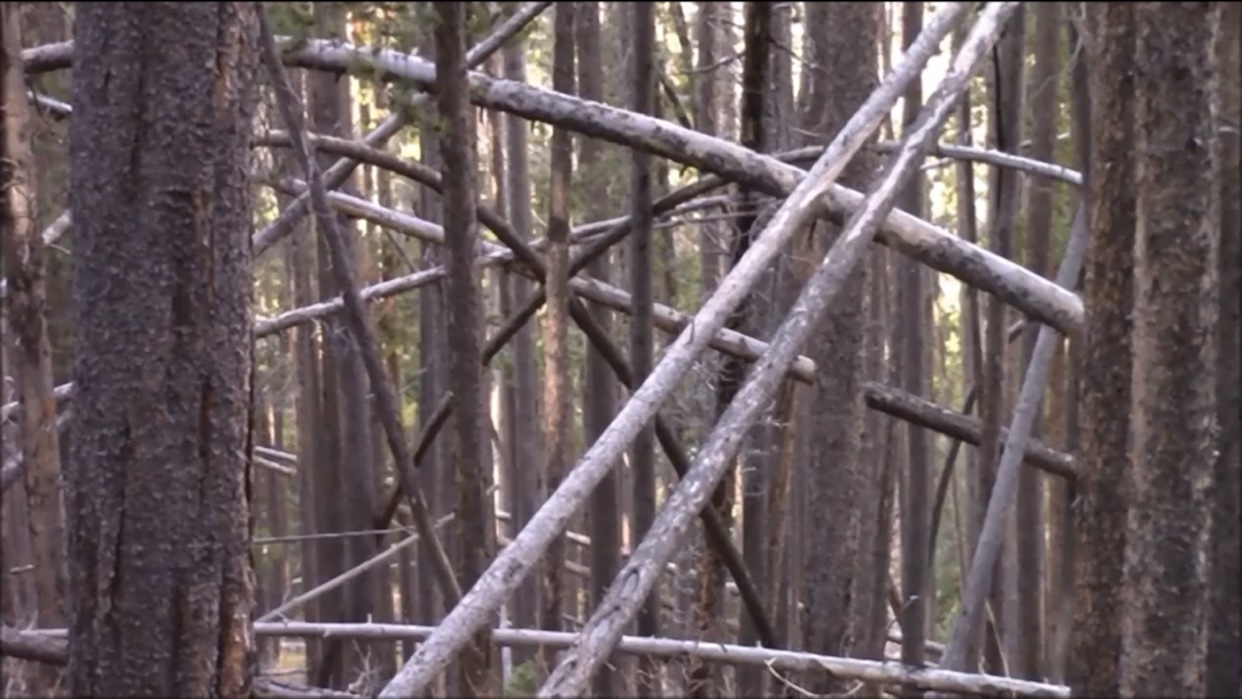The structures you are seeing are not structures at all - they are the result of either deadfall (see last definition) or blow-down/windthrow, where trees (or large branches) that have died have then fallen over, either due to wind events or snow fall. These trees topple onto other trees, stripping them of bark and pushing them down and out of the canopy so that they struggle to compete for light, and thereby increasing the risk of those trees dying too.
The footprints in the snow are the result of melting - this makes the prints much larger than you might otherwise expect (check out where birds have been hopping in your yard next time you have a snowfall). The last two photos of footprints in sand are (the same photo twice, as is the first photo of the footprint too - merely rotated 90 degrees anti-clockwise and stretched, see positions of green object and brown object to right and left of footprint respectively in all 3 photos.) but also definitely man-made. Based on the size of the pine-needles next to them (assuming Pinus ponderosa (most common species in the USA), the needles are 4.7–8.1 in (120–205 mm)) - which makes the foot print somewhere between ~7" (180 mm) and 16" (410 mm) - the average male US foot print (bare foot) is 270 mm/10.6" in length (female 245 mm/9.6"). I haven't found any official dimensions for average shoe size in the US, but it is estimated to be 10.5 (10.75"/273 mm)*, so the prints in the photo are a fairly good estimate in size for an approximately average foot wearing a shoe.
In addition, if you look at the print, you can also see the impression of the sole of the shoe, with a line extending from the mid-foot up to between the little-toe and the the 4th one, and some arch and heel lines that are comparable to these found here, making it likely that these are from a Vibram five-fingers shoe or some very similar brand.
* For what it's worth - my size 10.5 Nike Air Pegasus are ~300 mm/11.8"






